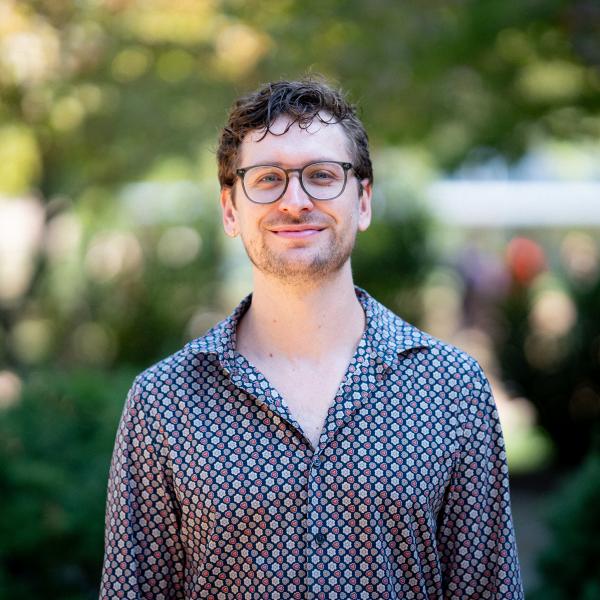Film studies scholar Colin Burnett traces the recent trajectory of film studies as an academic discipline in the seminal writings of David Bordwell and finds an exemplar for humanists of all stripes: an open-minded scholar eager to follow a question where it leads him.
Why does movie history matter?
Since the publication of his first book in 1981, David Bordwell has returned to this question repeatedly, consistently rethinking the role that movie history — or, better yet, movie historiography (the writing of movie history) — can play within the academy and culture at large. A robust history of movies, his work demonstrates, not only promises an understanding of the business and art of moving image production over the last 120 years, but a sense of the roots of media culture today. With the stakes so high, Bordwell has advocated passionately and mightily for movie history as a distinct discipline, as a unique way of understanding the major currents of modern art and life. An upcoming series of talks at Washington University in St. Louis gives us the opportunity to hear Bordwell’s latest pitch for why movie history matters.
Bordwell’s advocacy for movie history can be situated in the earliest efforts to transform film studies into an academic field. The late 1970s to the mid 1980s are now regarded as the period of the “historical turn,” where film scholars reassessed their emphasis on “continental” theory. The 34th Congress of the International Federation of Film Archives (FIAF), held in 1978 in Brighton, proved to be a watershed event in this regard, renewing interest in early cinema and reopening questions about film’s development as well as its institutional and cultural roots. Film historians such as Bordwell subsequently called, in highly controversial fashion, for a shift away from hifalutin, but wildly popular, approaches within the field, ones that sought, in many cases, simply to use movies to illustrate the latest in (often French) theory — Louis Althusser, Ferdinand de Saussure, Roland Barthes and Jacques Lacan were the authorities du jour. Bordwell joined with other historians and archivists in spearheading a campaign to plunder the archive. We don’t even know what we don’t know! was their charge. Let a thousand (historical) flowers bloom!
The broad assumptions and speculative leaps of 1960s and 1970s film theory would no longer fly. Time was ripe for a radical modesty — for close analysis, primary research, fine-grained causal stories about cinema’s origins and evolution, and for the adoption of hard-nosed methods that permitted film researchers to control for their personal biases, to the extent possible. The study of film, so historians hoped, would now mature. It would promote a unique form of scholarly rigor, and through this rigor, promote a fresh understanding of the aesthetic, institutional and political roles cinema has played within global culture and society.
Bordwell’s writings on movie history are seminal, essential reading not just for film majors but for all students of the humanities. They offer a glimpse into an alternative history of the 20th and 21st centuries — an aesthetic history.
Bordwell dubs his approach “historical poetics,” the study of why movies look and sound and tell the stories as they do at any given moment. If critics and commentators, even (or perhaps especially) today, write rather predictably about movies, as though they were simply “products of the times” — epiphenomena of rolling political currents, of sweeping sociocultural trends, of the zeitgeist — Bordwell’s histories consistently excite and surprise, uncovering the finer threads of historical time, the immediate and often neglected conditions that encourage artists like filmmakers to make the creative decisions they do.
In a field-defining work, The Classical Hollywood Cinema: Film Style and Mode of Production to 1960 (1985), Bordwell and his co-authors, Kristin Thompson and Janet Staiger, demonstrated that the studio system’s classical style can be attributed to the emergence of a particular division of labor and mode of production within American cinema. In the same year, Bordwell released another, equally foundational book, Narration in the Fiction Film (1985), which proposed a cognitive psychology of movie storytelling that addresses narrative form within diverse sociocultural and institutional settings. With Ozu and the Poetics of Cinema (1988), Bordwell applied historical poetics to non-Western cinema and tackled the challenges of relating an individual filmmaker’s style to a national culture. Other publications expanding our sense of — and discovering new threads within — movie history were to follow: a 1993 study exploring the possibilities of Marxist social engineering in the cinema of Sergei Eisenstein; a 2000 study of the mode of production and aesthetics of Hong Kong cinema; and a 2005 study that examined transnational trends (including France, Japan, Greece and Taiwan) in the art of cinematic staging.
His most recent work is the subject of the first of two talks at WashU. “Reinventing Hollywood: How 1940s Filmmakers Changed Movie Storytelling,” based on a recent book, promises to illuminate the production culture of midcentury Hollywood — a culture that gave rise to an exchange and competition of storytelling forms among practitioners, who in turn drew inspiration from adjacent media such as literature and theater. (He has expanded upon this topic on his wonderful blog, which he co-authors with Kristin Thompson.)
Why, then, does movie history — this movie history — matter today?
The second WashU talk, “Seeing and Seeking: A Beholder’s Guide to Gombrich,” a lecture on art historian E.H. Gombrich’s importance to humanistic and film study, is likely to address this question directly. As I wrote some years ago, Bordwell’s approach to movie history is very much indebted to Gombrich’s historiography of art, particularly its focus on “the riddle of style,” or why art has a history. Gombrich understood art history as the study of “the forging of master keys that open the mysterious locks of our senses.” This insight, from Art and Illusion: A Study in the Psychology of Pictorial Representation (1960), encouraged a generation of art historians to pursue new vistas of inquiry, to dispense with prevailing assumptions about the psychology of art-making and what it means to write its history — to remain open to open inquiry.
One might argue that this is precisely what Bordwell drew from Gombrich: a commitment to intra-disciplinary pluralism. In a recent interview, Bordwell revisits the past and recalls the controversy stirred by film historians who followed truly question-based research, who set out not to find support for a position they accepted a priori but pursue a line of inquiry wherever it led. They experienced pushback:
I remember being told this: “Your work doesn’t fit the agenda.…” The agenda was essentially psychoanalysis and neo-Marxism. Now, I am somebody who is very sympathetic to leftwing political science and political economic theories. I am more skeptical of psychoanalysis…. Nevertheless, I think it’s legitimate to pursue these things. I think that what was worrisome to some people was that what we did didn’t engage enough in issues they thought were salient. Patriarchy, capitalism, things like that.
The idea was a bold one: a movie history that charts intellectual terrain left untouched by “the agenda.”
The fruits of Bordwell’s work ultimately rest in having widened the base of commitments among film scholars, showing the promising shores beyond the realms of academic orthodoxy. The histories he has written, and continues to write, remind us of the value of cultivating a multitude of approaches, methods, and questions within specific disciplines and the humanities more broadly.




